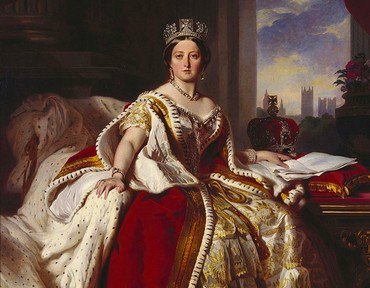Quiz Answer Key and Fun Facts
1. In later years, Queen Victoria would complain that it would seem that God did not want her present at the birth of any of Bertie and Alix's children. The first child, Prince Albert Victor, was two months premature, so nothing was ready. Where was he born?
2. On the 2nd of June 1865, Princess Alexandra attended a concert, but excused herself at the last minute. It was as well that she did, because at one-thirty the next morning her next child, a boy, was born. Queen Victoria complained that she was not able to be present at this birth either, but the Princess received a kinder telegram from whom?
3. Unfortunately, Alix was ill when she gave birth her first daughter, Louise Victoria Alexandra Dagmar in 1867. What ailed her?
4. Queen Victoria thought that the Prince and Princess of Wales were too indulgent with their children. And when they visited Apapa and Amama (King Christian and Queen Louise) in Denmark, the children were spoiled outrageously. Soon, though, Bertie knew he would have to turn his attention to their education. Who did he appoint to tutor Eddy and Georgy?
5. Who said that the arrival of Princess Victoria Alexandra Olga Marie ('Toria') in 1868 was 'a very uninteresting thing - for it seems to me to go on like the rabbits in Windsor Park'?
6. Princess Maud Charlotte Mary Victoria was born on 26 November 1869, at a time when the popularity of the monarchy was at its lowest ebb. What was Maud's nickname as a child?
7. When Georgy joined the navy aged twelve in 1878, Dalton advised that Eddy go with him instead of attending Wellington College as the Queen suggested. Why did Dalton think this was best?
8. Once, the Princess of Wales heard a rumor that her sons had had their noses tattooed while abroad with the navy. Horrified, she wrote to Georgy, only to receive the reply that they had merely gotten some what on their noses?
9. In 1872, the Princess of Wales gave birth to her last child, Alexander John. Sadly, he lived only 24 hours. History repeated itself several years later when George V and Queen Mary's son John died in what year?
10. Louise, Victoria and Maud were often known as 'their royal shynesses' (or 'the whispering Wales girls'), because of their listlessness. While this was fair to say of Louise and Toria, Maud at least had inherited some of their mother's charm and good looks. Whom did she marry in 1896?
11. Princess __________ of Wales remained a spinster all her life.
12. In 1889, Louise married Alexander Duff ('Macduff'), Marquess of Macduff and Earl of Fife. What title did Queen Victoria promote him to after the wedding?
13. In the early 1890s, Queen Victoria began looking for a wife for Prince Eddy. He had already proposed to one of his German cousins, but she turned him down. Who was she?
14. Eddy died in 1892. It was both a tragedy and a relief, especially to the older generation. What was it that killed the always fragile prince in the end?
15. Who was the last of the Wales relatives to die?
Source: Author
LiamR
This quiz was reviewed by FunTrivia editor
Exit10 before going online.
Any errors found in FunTrivia content are routinely corrected through our feedback system.


